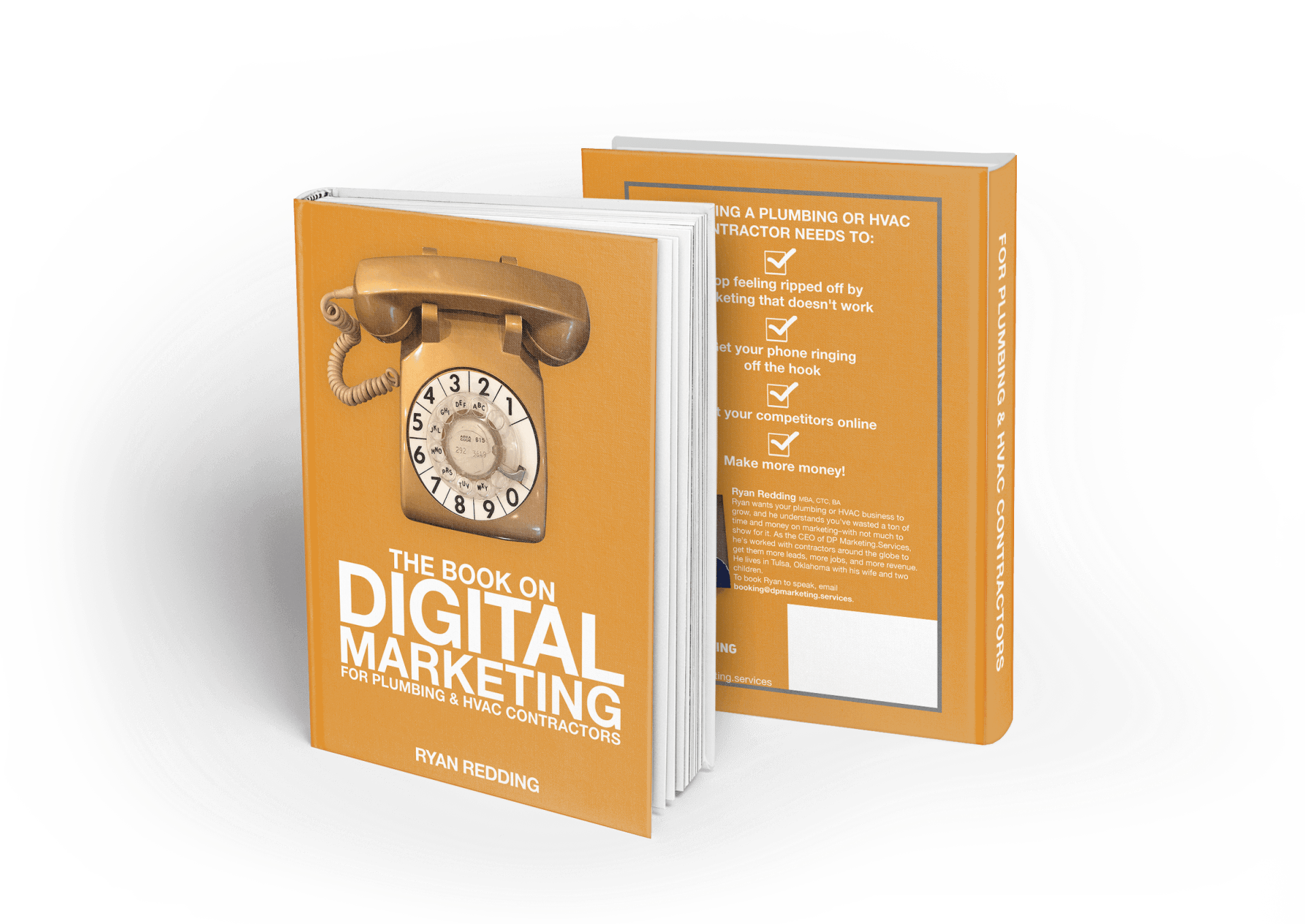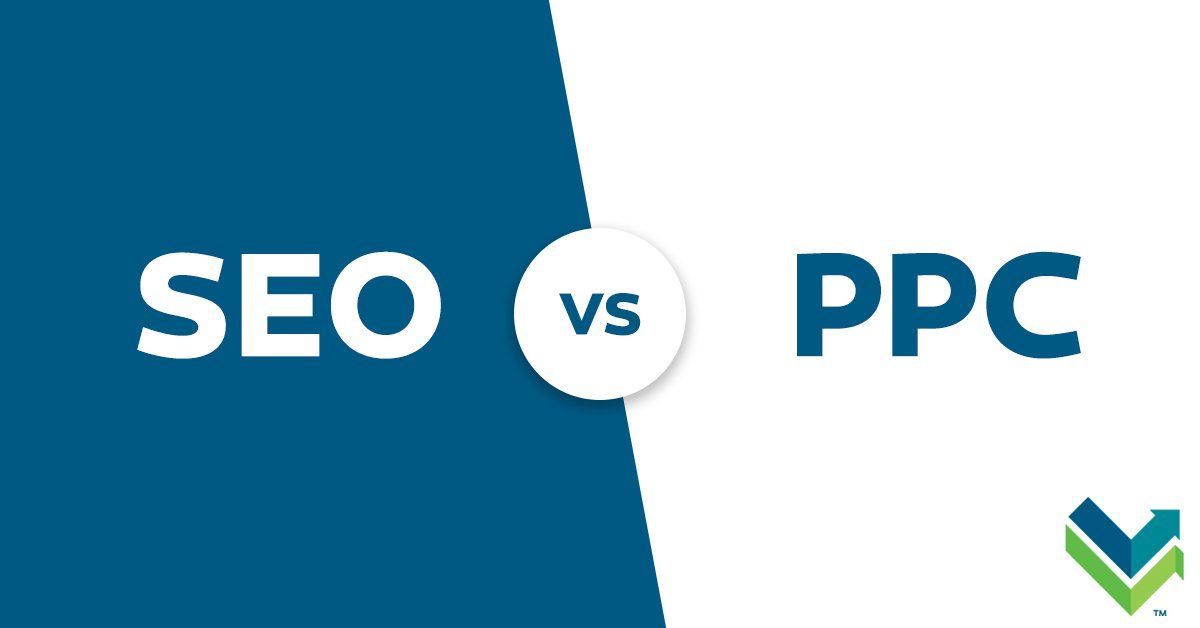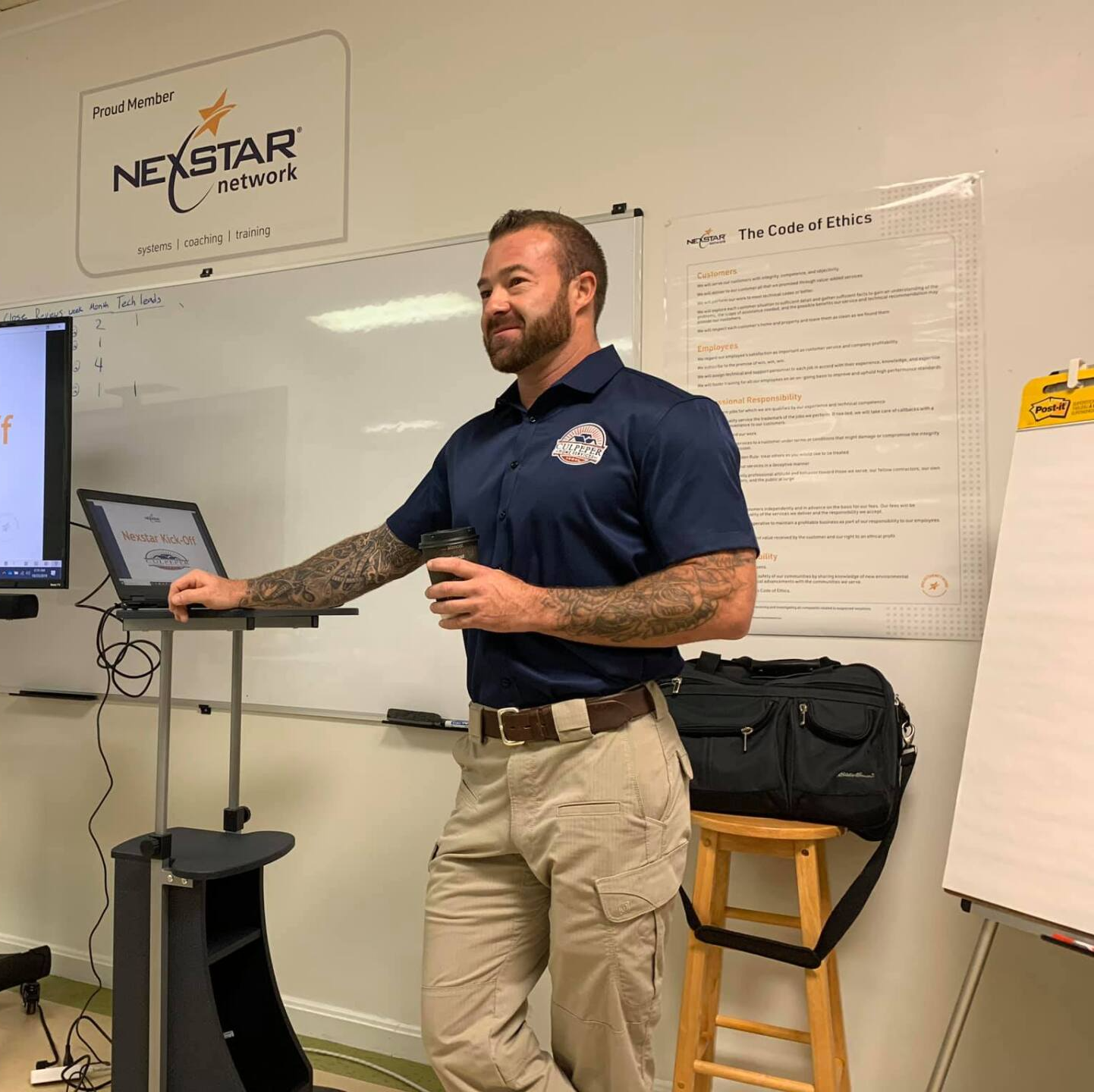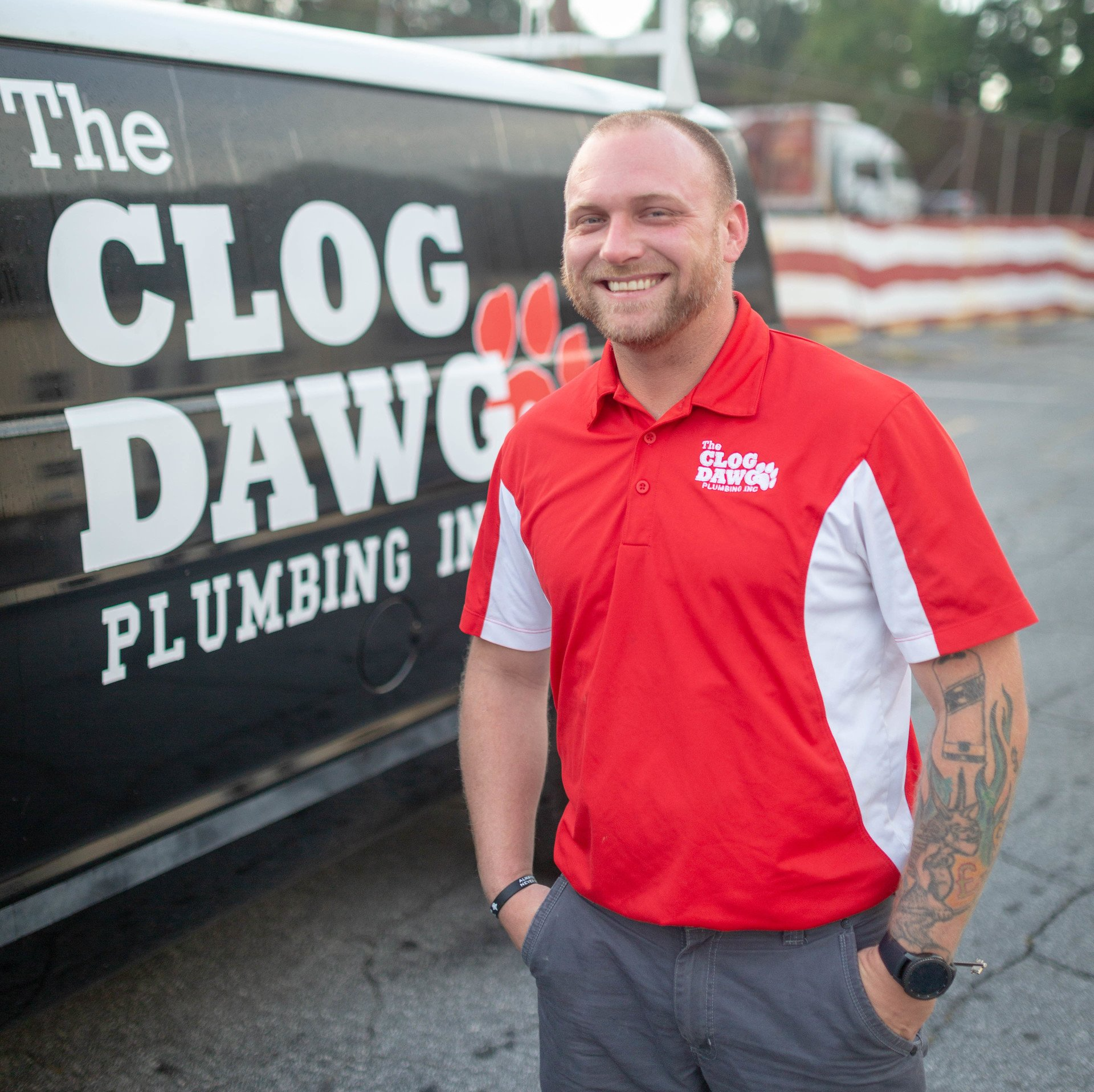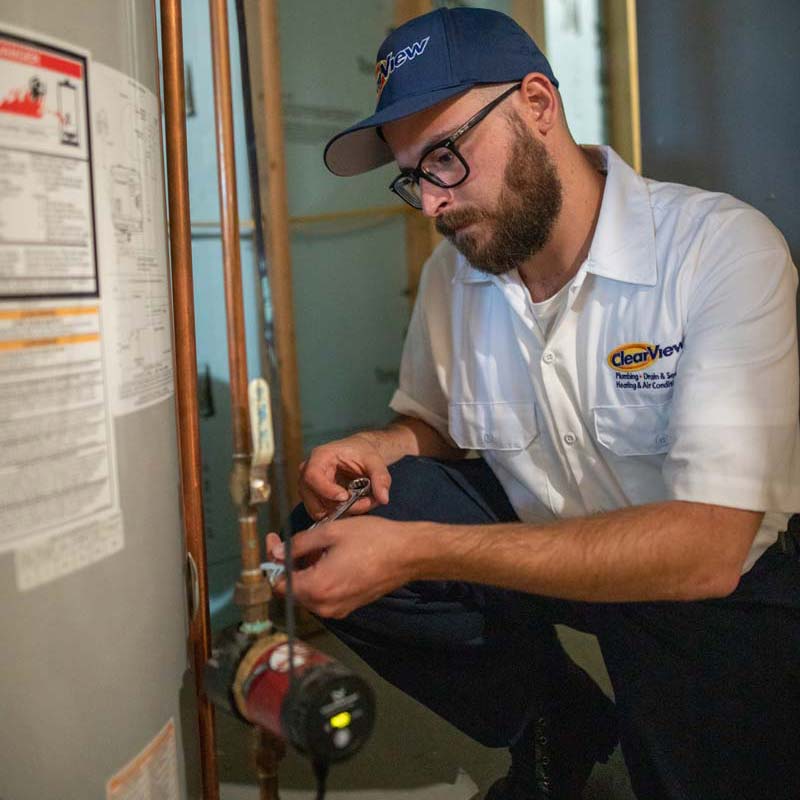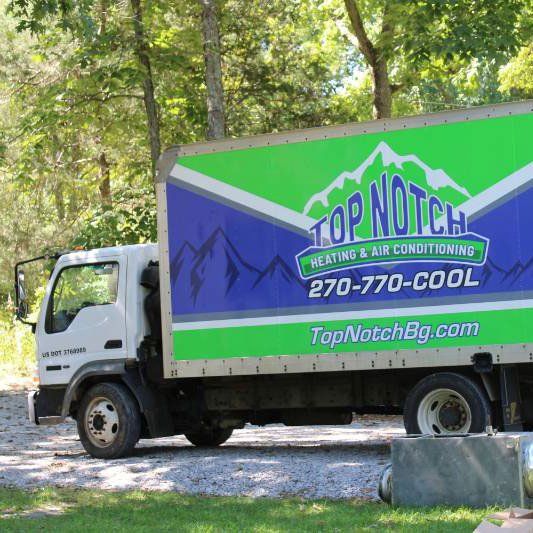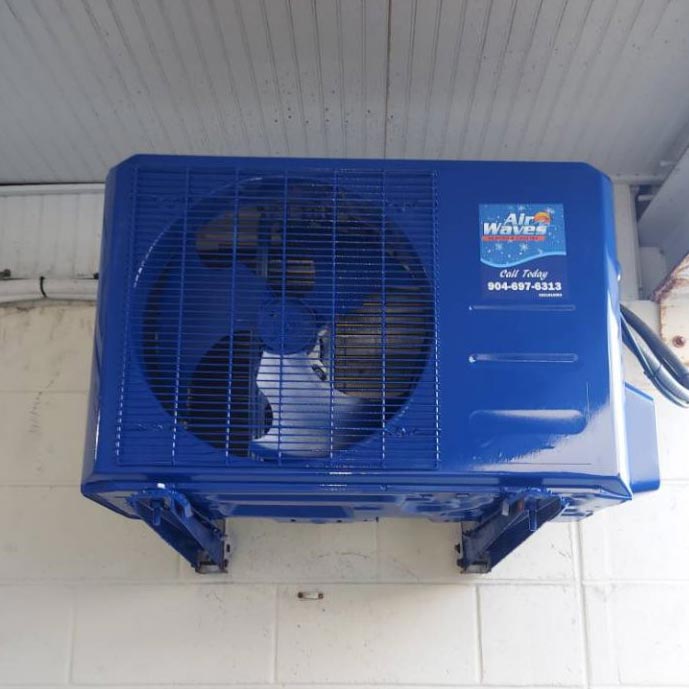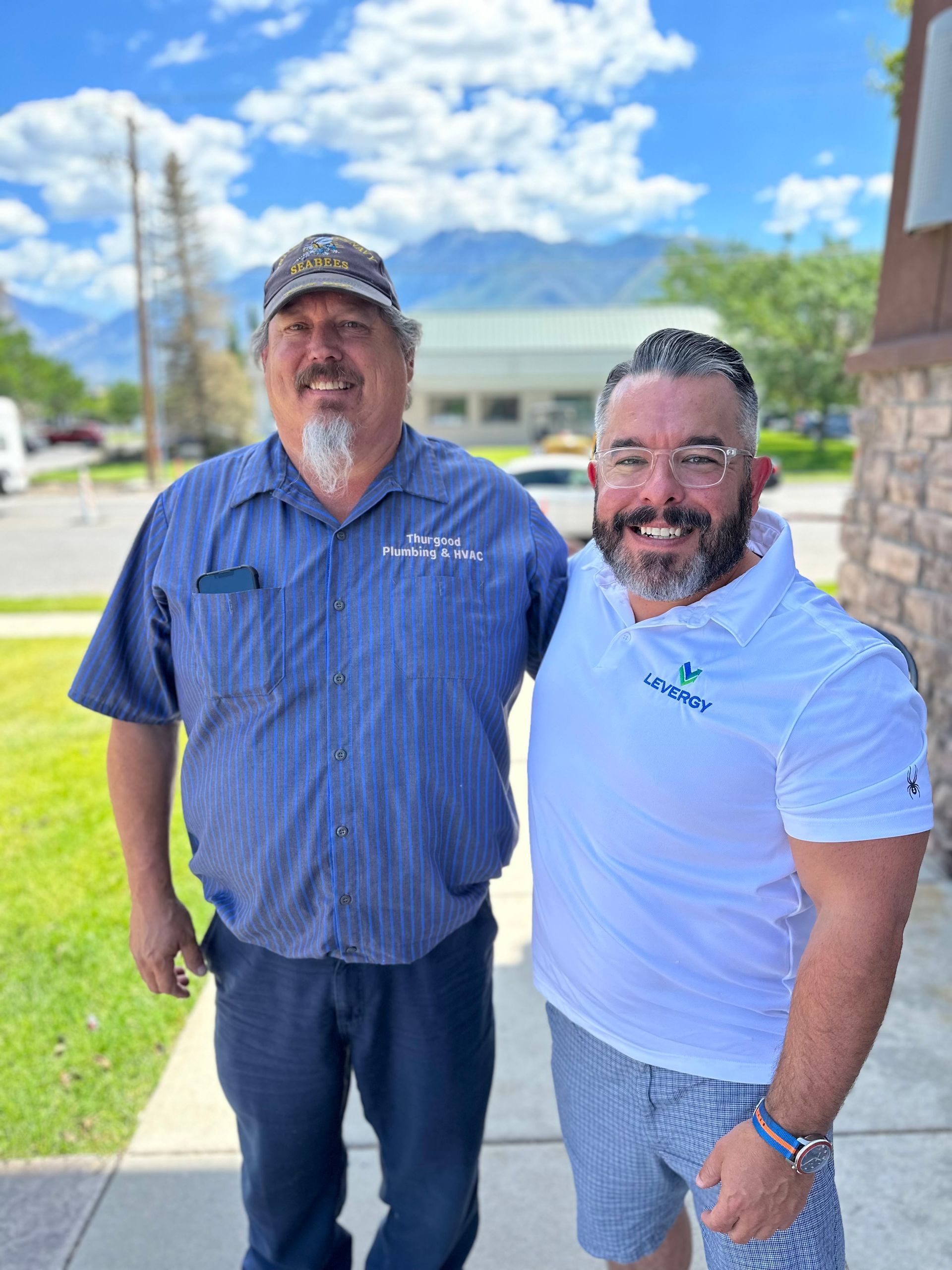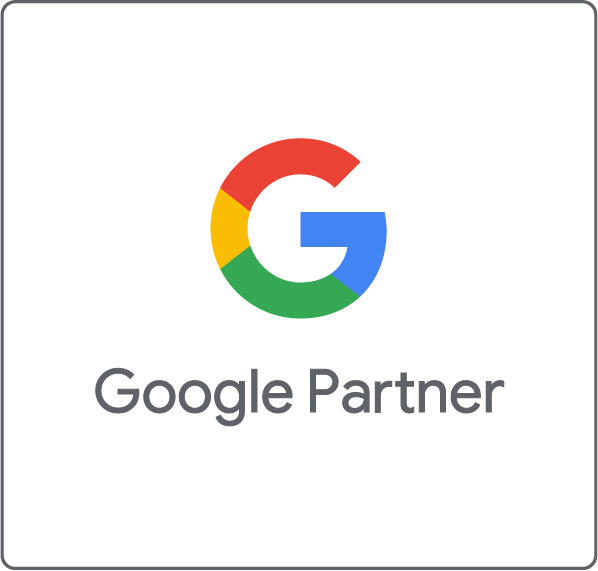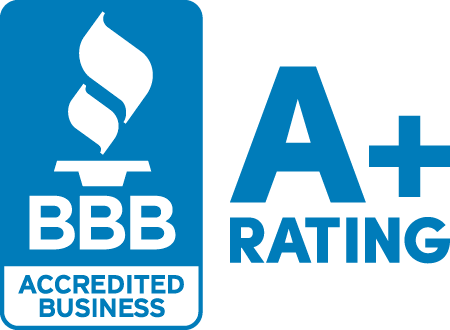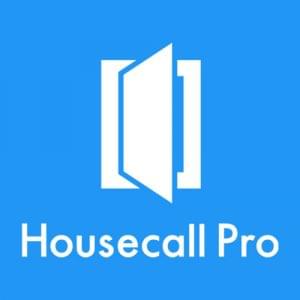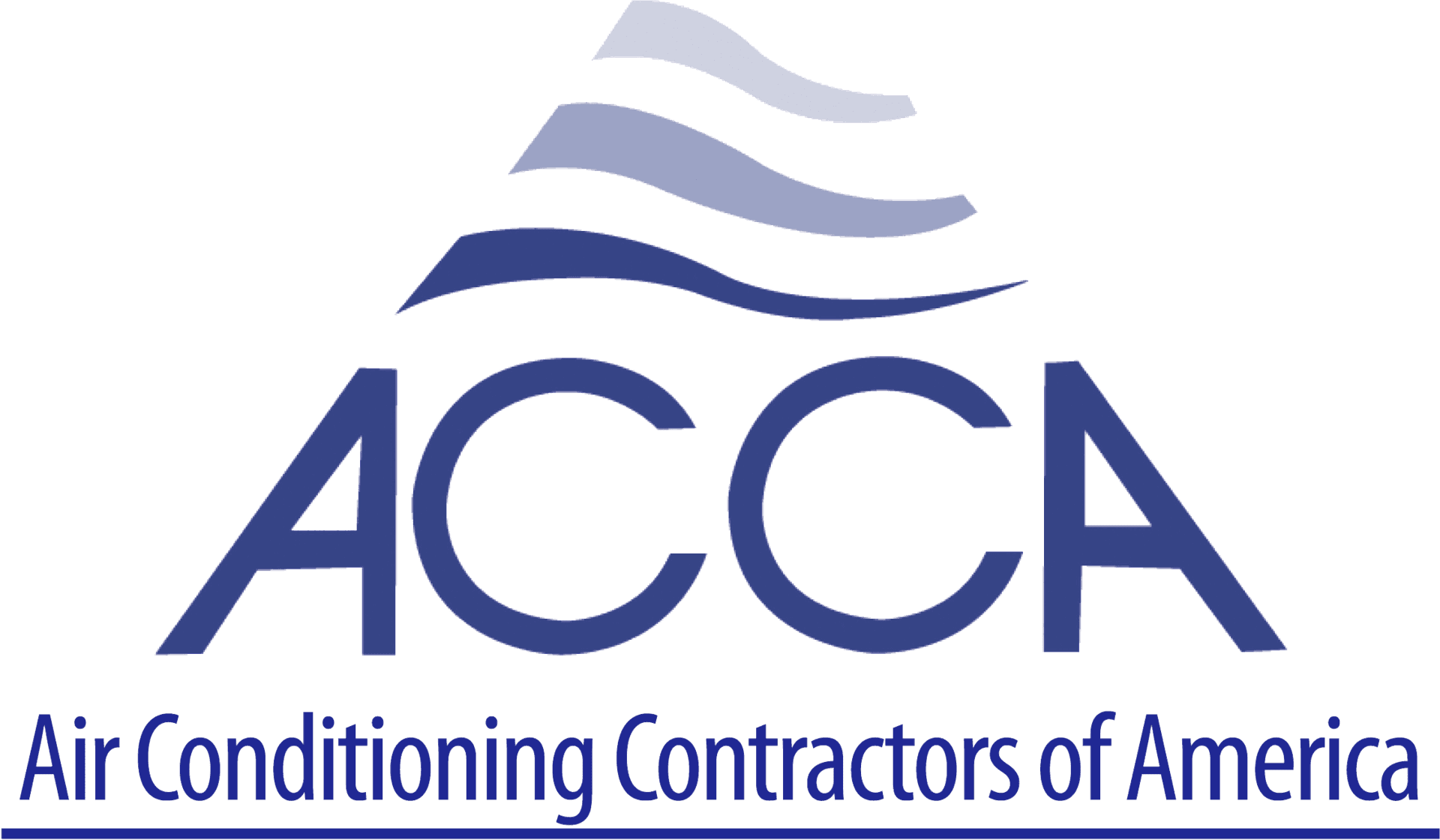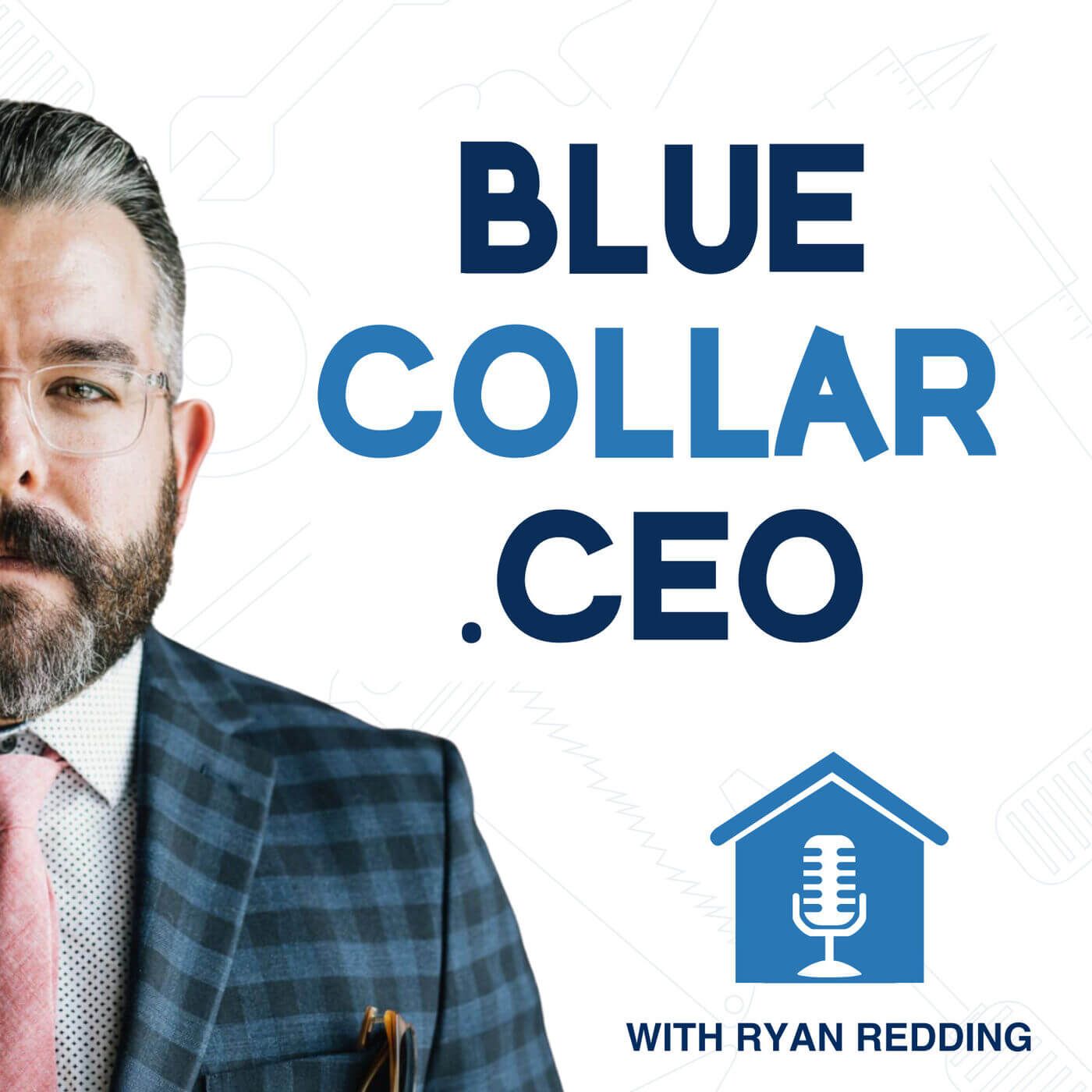SEO or PPC? How to Know What's Right for Your Plumbing or HVAC Business
How to Know What's Right for Your Plumbing or HVAC Business
As a plumbing or HVAC shop, what you want most is more jobs, right? To get them, you understand that you’re going to need to grow your customer base. And to do that, you need one thing: Leads. Quality ones.
There are a handful of ways to get more leads, but today we’re going to talk specifically about one of them—arguably the most effective one: You need to get more people—the right people—to your website.
I know, I know: You’re a home services guru, not a web design nerd, so trying to get more people (“traffic”) to your site can feel frustrating and overwhelming. If you try Googling something like,“how to get more website visitors” you’ll find lots of confusing articles chock full techy jargon and a gazillion acronyms.
Let’s demystify two of the most common of those acronyms: PPC (Pay Per Click) and SEO (Search Engine Optimization).Chances are you know a bit about SEO and PPC for HVAC and plumbers—the basics, anyway. You may not know, however, exactly which one to use and when, how the two work together, and the most efficient and cost-effective approach to getting the result you’re after: a phone that’s ringing off the hook.
I can help. Let’s start with a quick review of the basics.
What’s the difference between SEO and PPC?
SEO and PPC are different advertising means to the same end: getting more prospective customers to your website. The major difference between them? SEO is “free.” PPC is not. (The official language is “organic” and “paid.”)
Now, here’s why I put “free” in quotation marks. Doing SEO effectively is hard, so to do it right, you’ll have an investment in either time or money. In other words, you’ll either spend gobs of time reading and trying to implement SEO tactics recommended by experts like these
, or you’ll spend some money letting someone else do it for you. ( Pick me!
)
Which brings us to the second major difference between PPC and SEO. PPC is comparatively simple: You write Google Ads (with plenty of help from Google itself), you set a budget, and you launch the ads. If your budget is more attractive to Google than the other guys’, you win; your investment will launch you to the top few options on page 1 of the Search Engine Results Page (SERP).
SEO, on the other hand, is ridiculously complicated and nuanced, it’s slow, and best practices change constantly. If you don’t pay attention, your website will—before you can say keyword stuffing
—drop to page 2 of the SERP. That’s bad. That’s no-man’s land. As we marketing nerds like to joke, page 2 of the SERP is the perfect place to hide a dead body. No one will ever go looking for it—or for your home services company—over there.
OK, Ryan, how complicated can it possibly be?
Ridiculously dang complicated. Currently, there are 210 known SEO attributesthat affect your search rank. Some are obvious ( keywordsand backlinks) and some are super obscure (poison anchor text and Easter egg results). Not all of those attributes have equal weight, but Google is tight-lipped about what matters most. And while it’s possible to game the system by using black hat SEO techniques, it’s not recommended. No one likes to get played—especially Google. If you want to win in the long run, you have to go about it the right way, with good strategy and honest, thoughtful tactics.
So, which is better? SEO or PPC?
So what should you go with as a home services company? SEO or PPC?
Yes.
I know, I know: That’s an annoying answer. But if you’ve been thinking “OK, SEO is too complicated, so I’m just going to pay for Google Ads and have it over with,” you’re out of luck. The truth is, SEO and PPC are like peanut butter and chocolate. You can separate them, but the result won’t be nearly as good.
However, the way you use SEO and PPC changes over time. Here’s how.
SEO or PPC for Start-Up Plumbing and HVAC Shops
As a start-up shop, you need customers now. Yesterday, in fact. Unfortunately, you have very few options to get leads quickly:
- You haven’t been around long enough to have any clout on Angie’s List or HomeAdvisor.
- You don’t have enough reviews to make good friends with Local Services.
- You should definitely be upping your SEO game, but ranking organically takes a long, long time. (Nearly as long as it took for the St. Louis Blues to finally get their hands on the Stanley Cup.)
- You don’t have the money to engage in effective direct mail campaigns.
- Social ads won’t help because you have exactly zero street cred as a new shop.
- You could use sites like NextDoor or neighborhood Facebook Groups, and hope that you can get enough work to at least get cash flowing a bit.
So, to paraphrase Princess Leia
: Help us, Google Ads. You’re our only hope.
If you want to grow your shop, you’ll need to put 9% to 15% of your annual revenue toward marketing, and at least 40% of that should be invested in the digital space. (If you’re wanting to stay that same size, 7% of your revenue as marketing budget is a healthy metric.) More specifically: If you’re just starting to use Google Ads, plan to spend $1500-2000/month or $50-65/day.
Speaking honestly here: If you’re not spending at least $1500 per month on Google Ads, it’s probably not worth using at all. It’s not about “Google’s greed” or anything like that;it’s more about you not having enough data flowing through the Ads platform to actually show up in searches, and optimize for what’s working.
But again: Don’t neglect your SEO. While you’re helping to pay Google employees’ kids’ tuition, you have to, at the same time, start moving up organically. I mean, unless you want to pay their grandkids’ tuition, too.
Keep in mind: only about 10% of the peoplewho search for a “plumber near me” or “[your city] air conditioner repair” will click on an ad. Six times as many people will click on an organic (not an ad) listing built by SEO.
SEO or PPC for Mid-Size Plumbing and HVAC Shops
If your shop’s hitting $1 million or more, chances are good that you’ve done well with your SEO. At this point, you can probably back off a bit on PPC ads. I say “probably” because in this season of your business, SEO and PPC strategy is more art than science. Experimentation is the name of the game here. Reduce your Google Ads spend a bit, and pay close attention to what happens as a result. Do you disappear from page 1 of the SERP? Does your click-through rate (CTR) drop? Does your lead quality diminish?
If everything seems fine, reduce your ad spend a bit more and, again, watch what happens to all your key performance indicators (KPI). (If you’re thinking “Ummm… what’s a KPI?” check out Chapter 10 of my book [ link]. It’s nerdy and glorious.)
Speaking of KPIs, lots of shops find that their efficiency peaks around six vans in the field. If you’re wanting to stabilize around this size, make sure your SEO strategies are effective, and begin reducing your paid ad spend until you hit the magic 7% of revenue threshold.
Personally? Our preference is that you only run paids ads because you want to—not because you need to. If your SEO is killing it, and your online reputation is sound, you should be able to keep things rolling pretty smoothly by only using paid leads or paid traffic sources during seasonally slow times.
SEO or PPC for Large Plumbing and HVAC Shops
Here’s why you have to pay attention to how your PPC spend affects KPI. At some point on the path from mid-sized to super-big, home services companies have to start investing marketing dollars everywhere again. It feels counter-intuitive, but eventually SEO maxes out its market penetration and suddenly you’ll need all the marketing things all the time: PPC, social campaigns, direct mail, local services, lead generation, billboards, TV, radio ads, and on and on and on.
Weird, huh? As you grow, you’ll actually lose the option to be selective about what advertising channels to use. Why? Because you have a lot more techs to keep busy, which means you need all the leads you can get. And to get all
the leads, you need all
the marketing.
Keep in mind: If you’re satisfied with the number of jobs you’re landing—if you don’t want or need to grow—you can slowly drop your marketing budget from 9-15% of your revenue back to 7% or 8%. If you’re a $5 million shop, that’s a good chunk of money you can use to buy new service trucks or hire another customer service rep or update your technology or… go on the awesome-ist vacation ever.
Be careful, though: If you’re spending 9-15% of your revenue on marketing, but you’re not growing, you have a marketing problem. You’re either spending money on the wrong channels, or using the right channels poorly. In any event, we’d be happy to review your digital marketing, and give you an honest assessment of what your options are.
Digital marketing is hard. We can help.
Listen, you’re a smart business owner, and if there were some sort of SEO/PPC formula to follow, you’d be all over it. But digital marketing is complicated, and it’s easier than it should be to waste a bunch of money. I've developed a proven process that's helped dozens of HVAC and plumbing contractors 8x their revenue
. How about you worry about being the very best plumbing or HVAC shop out there—and let me worry about making sure everyone knows it. Get started for free today.
Was This Helpful?
Sign up here, and we'll automatically email you as we publish new articles that you may find useful.
Was This Helpful?
As Seen In:
Is your website helping or hurting your SEO efforts? Find out now for free.
We've got give-a-damn for days.
When my team talks with new clients, we hear a ton of frustration, overwhelm, and general fed-up-ness.
I'm guessing you can relate.
Maybe you've been trying to figure out all this marketing stuff on your own OR you've handed a crap-ton of money to an "expert" for no apparent reason.
Your phones still aren't ringing like they should.
Your advertising still isn't performing like you expected.
Your website's still not ranking or converting like it needs to.
You can't figure out why... and/or your current marketing "partner" isn't 'fessing up.
We think you deserve better.

Ryan Redding
CEO Levergy
Author of The Book on Digital Marketing for Plumbing and HVAC Contractors
Here's how we'll get you more plumbing, HVAC, electrical, garage door, roofing, or other home service leads:

Tell us what's keeping you up at night.
Let's get on a call so you can tell us where your business is and where you want to go. We'll follow-up with a free, comprehensive assessment and actionable tips.

We'll help you fix it.
If you like what you see so far, we'll put together a customized plan with transparent, flat-rate pricing—and then get to work growing your business.

So you can breathe easy.
Have peace of mind knowing you have a true partner on your side who cares about your success as much as you do.
What you get is important.
How you're treated is what sets us apart.
Culpeper Home Services
"... they always go above and beyond the call of duty. I'm impressed with their work ethic, loyalty, and integrity."
- Russell Furr, President
The Clog Dawg
"[Levergy] understood my specific needs and got the work done—bypassing all the unnecessary nonsense. And now business is booming!"
- Steven Douglass, President
Your mileage may vary.
Better results are here.
Discover how to stop wasting money on marketing that doesn't work, and make your phone ring off the hook.
